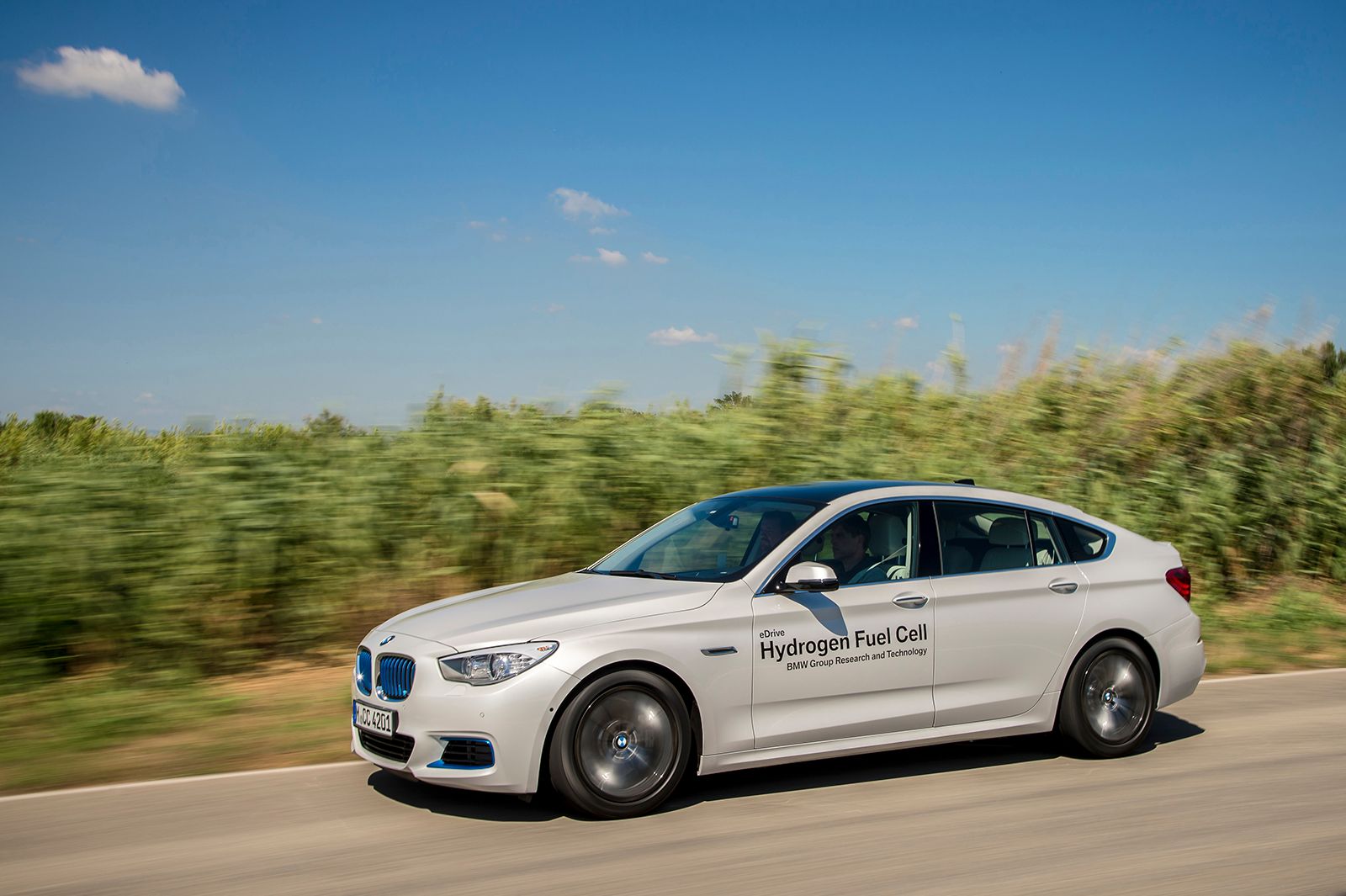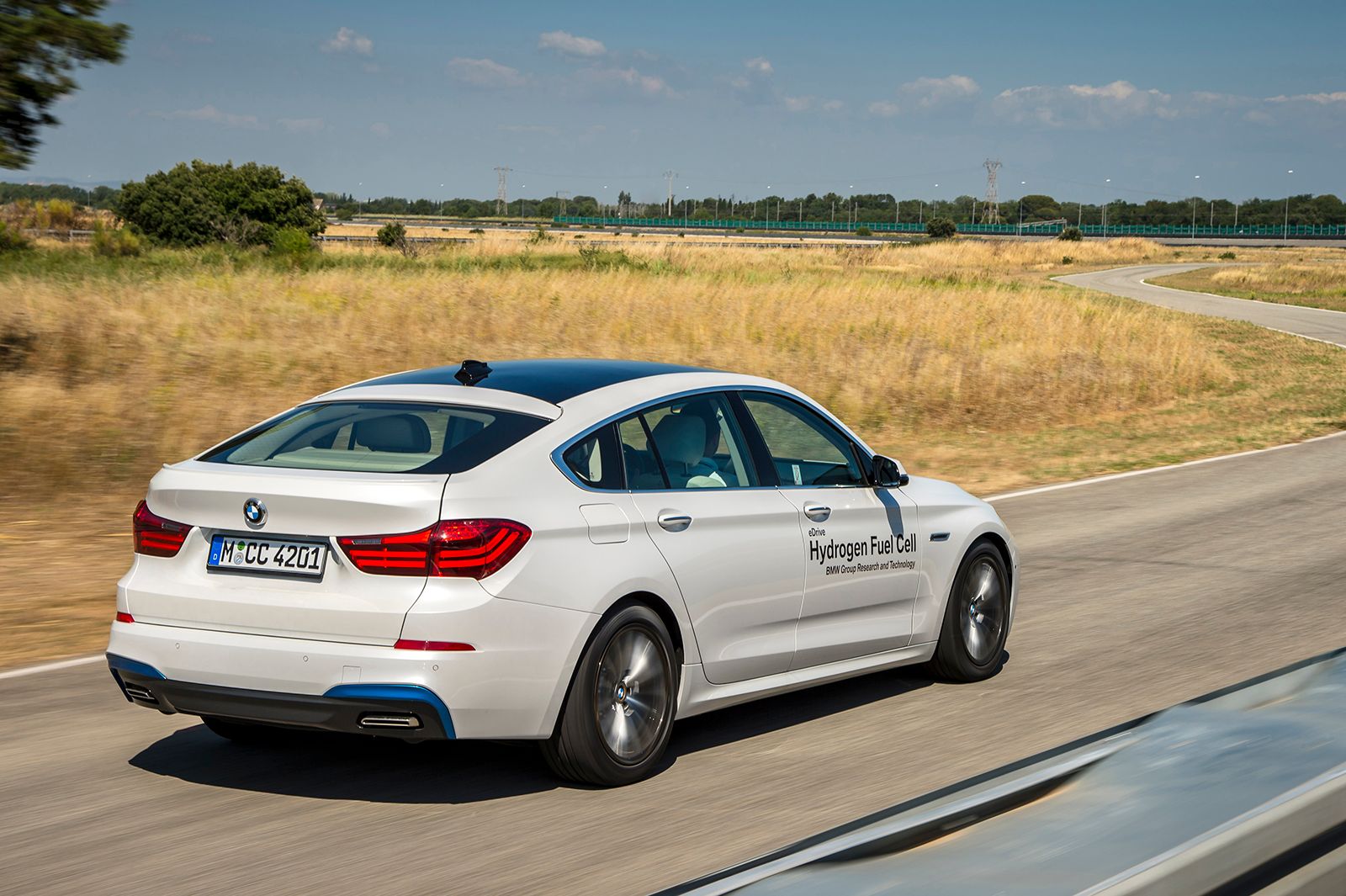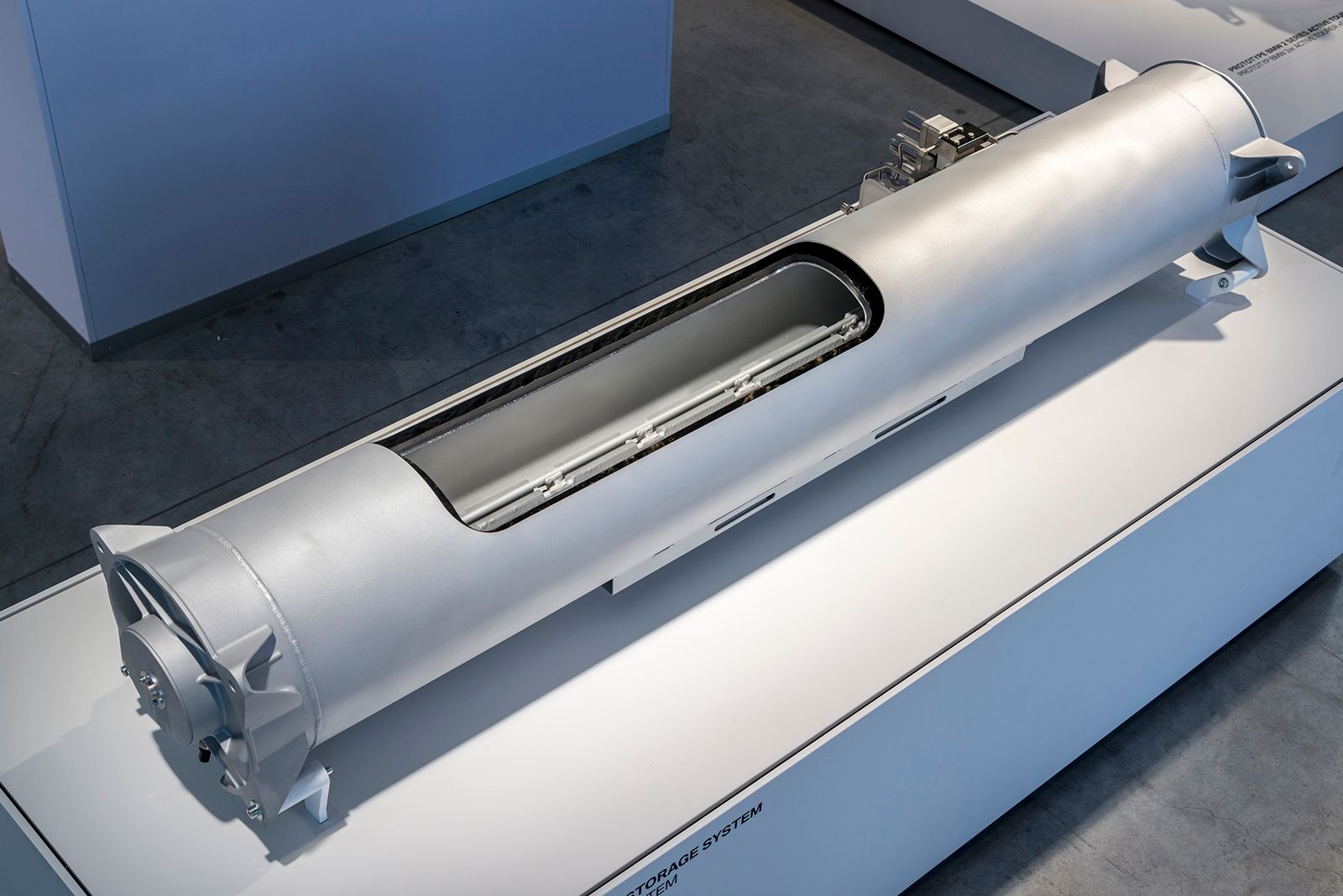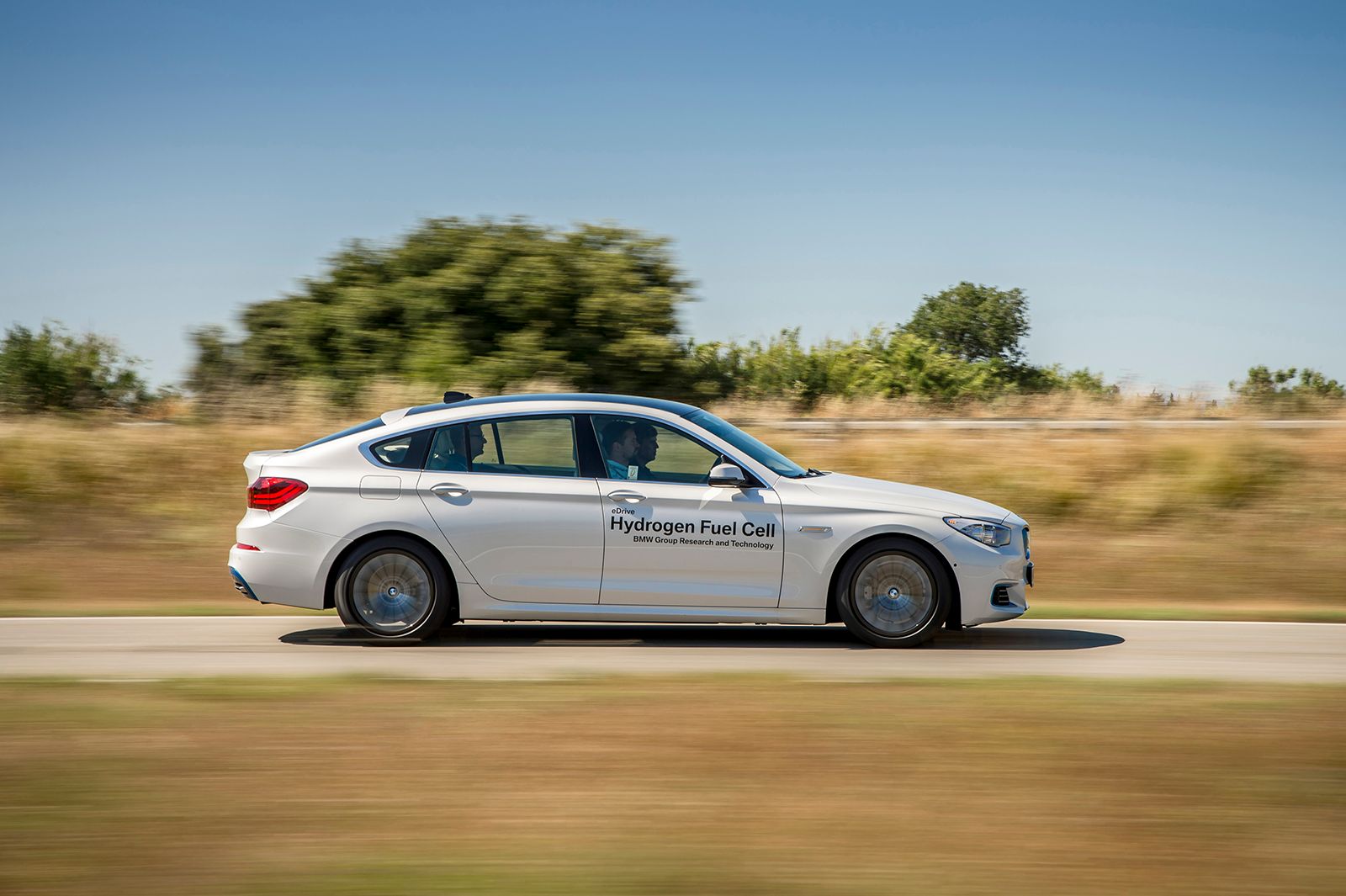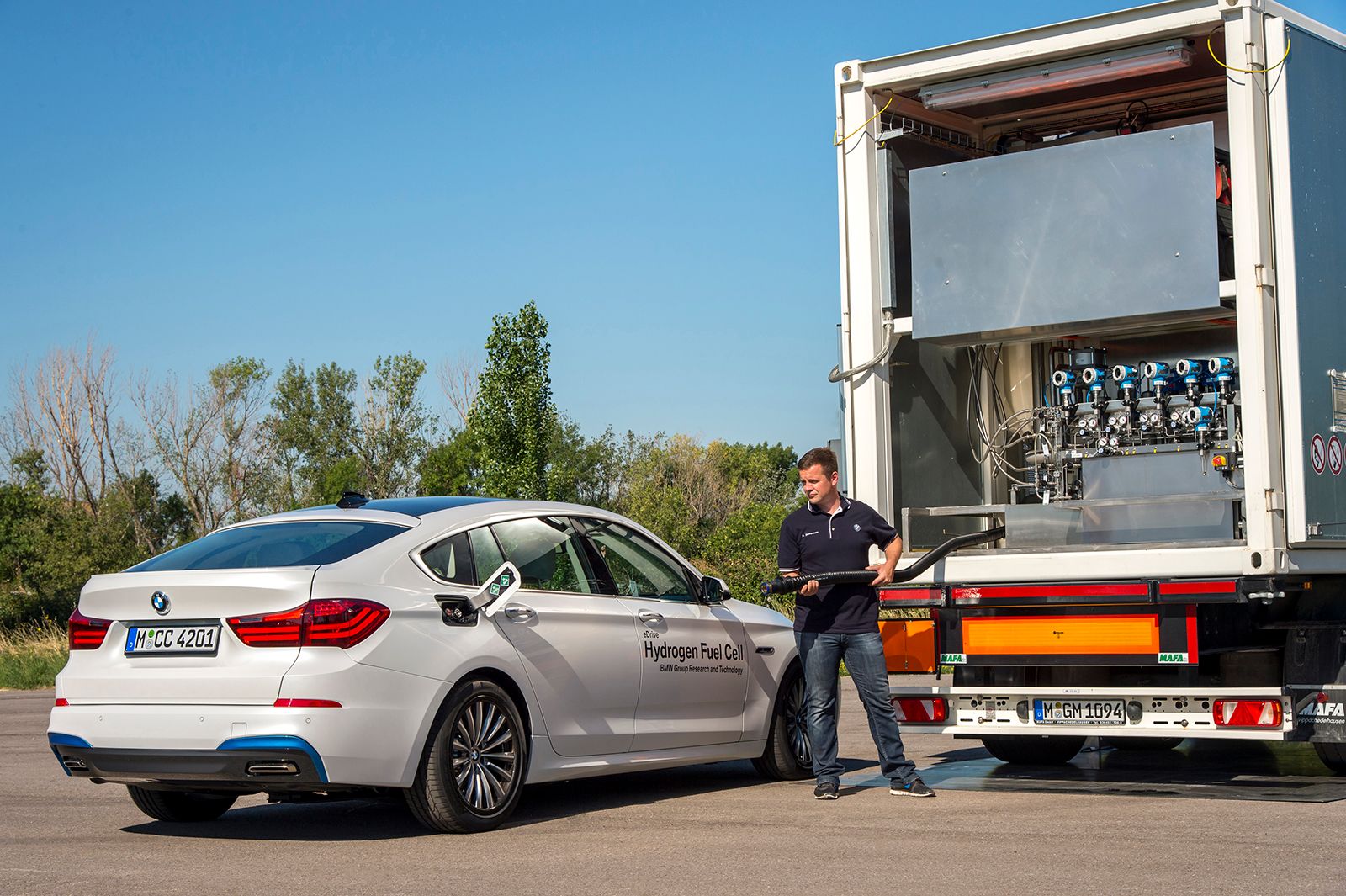It's almost strange to think how nonchalantly we consume the world's depleting fossil fuel reserves. Sure, it's fun to hammer a performance car down the motorway (or even a normal car for that matter), with that satisfying hum from the exhausts, but the Green Party voter inside us all knows that can't really be a forever thing.
Car makers seemingly know this too and have been working on alternative solutions. But, like politicians, the answers aren't always entirely clear cut in tackling the issues head-on. We've already seen hybrids and fully electric cars go some way into cutting emissions – or, perhaps more accurately, redistributing the source of their output – and now it's the turn of hydrogen fuel cell technology to grab some of the zero emissions limelight by taking an altogether different approach.
We've seen the Hyundai ix35, but German car-marker giant BMW has shown off its altogether more sophisticated offering: the 5-Series GT hydrogen fuel cell concept. And we got to drive one around BMW's Miramas proving grounds in Marseille to get a taste of what the future may hold.
So why hydrogen? Unlike electric it doesn't take hours upon hours to recharge a battery. Instead you simply head to the station and pick up the H2 hose rather than the petrol or diesel ones, and there's no need to plug in and charge like an electric.
Well, on the grand assumption that you can find such a station, as they are next to non-existent in the UK and rare in the rest of the world due to significant setup costs. BMW, like Toyota, Hyundai and others, are trying to lay the foundations for the future, but it's a chicken and egg situation: something universal needs to happen fast for hydrogen fuel cells to take-off as a viable alternative.
However, the one big sell is the speed of refuelling, by comparison to an all-electric model anyway. From near-empty to a full tank – which, in the case of this 5 Series GT, delivers a 700km range – will take less than five minutes and cost around €70 (at present; that could drop ten fold if the technology is widely adopted). That's a comparable price to the equivalent petrol engine too, albeit with zero emissions – all that comes out the rear pipes of this futuristic hydrogen concept is water. Yep, pure H20.
Given this 5 Series GT can still hit 100kmph from stationary in 8.4 seconds – and continue on to 180kmph – goes to show it's no paltry G-Wiz. This is a big car, with all the usual good looks and engineering standards of a 5 Series. It's not as energetic as the petrol GT, of course, but even so it's still fairly good going.
By coupling a high-torque electric motor with the rear axle, along with the hydrogen fuel cell-powered engine commanding the front axle, the hydrogen GT offers four wheel drive that feels, for the most part, like a genuine BMW 5 Series. It's a bit stiffer, what with a 105-litre tank that's over a metre long running down its middle, but slipping into those track corners and temporary cone-marked chicanes out on the track still felt like driving a real car.
The electric motor to the rear only delivers 1kWh, which is a small capacity, but it's enough to add to the torque and, therefore, propulsion, to give the hydrogen GT more pep. When slamming the accelerator to the floor the car whistles and hums like some futuristic spaceship, with most of the noise coming from the electric motor to the rear (it's far more noticeable as a passenger in the rear seats). This isn't a production car, though, with BMW shrugging off the current noise as simply part of the production process – something the company can easily dampen should it become a production car.
Perhaps what's most interesting about this particular car is the type of hydrogen cell at its core. Using BMW's proprietary cryogenic pressure vessel technology – yep, all we could think about was space flight cryostasis and Alien – the 350-bar pressure of the tank is half that of the more standard 700-bar fuel cells being widely cited as the first-gen production run. For BMW (and any other maker that buys into the tech, something unconfirmed at present despite co-production with Toyota) the use of cryogenic hydrogen (which is much colder at -222C) in the 350-bar tank means it's more condensed and, therefore, more fuel weight can enter an equivalent space.
But while the hydrogen fuel is the same source material, the difference in treatment at the pump and the associated pressure is akin to the difference between diesel and petrol: you have to use the correct one for the vehicle (so the GT can't accept 700-bar). Which, for an infant fuel type, might get confusing quickly; just think about electric cars and the multiple plug types found at different stations (but not all). We can see what BMW is trying to do here, though: get ahead of the game and offer a better, longer-range product than the anticipated first-gen standard.
This 350-bar cryogenic pressure vessel system also requires the hydrogen to be stored between -210 to -230 degrees Celsius (-222C is the magic number) at both the distributor's pump and within the car itself. That's a lot, lot colder than the 700-bar system's -40C temperature.
It's quite mind boggling how its done: the tank cross-section on show at Miramas showed off a bullet-proof exterior and thermal interior layers many centimetres thick. It can maintain temperature for several weeks within the car – a bit like the world's most impressive German Thermos flask. Handling such temperatures needs the risk removed, so the lock-on and automated fuelling process from a fully insulated hose is entirely clean thanks to a thrice-run pump to clean the hose; there's no risk of coming into contact with the liquid, unlike the dribble you can sometimes get from a petrol pump.
Beyond the car itself there's still the big question of where hydrogen fuel comes from. At present a lot of it is the result of natural gas reforming, also known as fracking, and we all know how many people (rightly) feel about that practice. However, it is possible to utilise electrolysis, where a current is passed though water and, assuming a natural source such as wind power, that's approaching as environmentally friendly as fuel comes. Problem is, there aren't that many wind farms and renewable energy sources, which leaves a deficit and, no fault of BMW, we're back in a similar place as we are with electric vehicles: it's more politics and displacement than a fully realised answer.
Yet this is still positive progress that's built on a dream which started some 30 years ago at BMW. But to truly take-off the price needs to settle down (we dread to think how much this car would cost, and BMW isn't making any suggestions), the technology needs to be embraced, the renewable energy sources need to be put in place around the world, and manufacturers need to work together with one common goal.
It's inspiring to see and utilise new technologies that genuinely work – and driving the BMW 5 Series GT hydrogen fuel cell concept is as close as we've come to driving into the future, today. It might not be ready to save the planet just yet, but come 2020 we may well see this car, with tweaks and upgrades, out on the open road.

